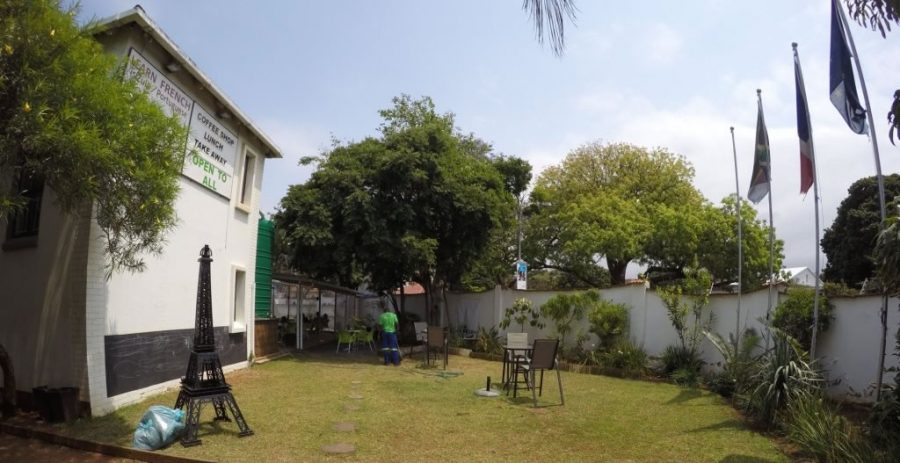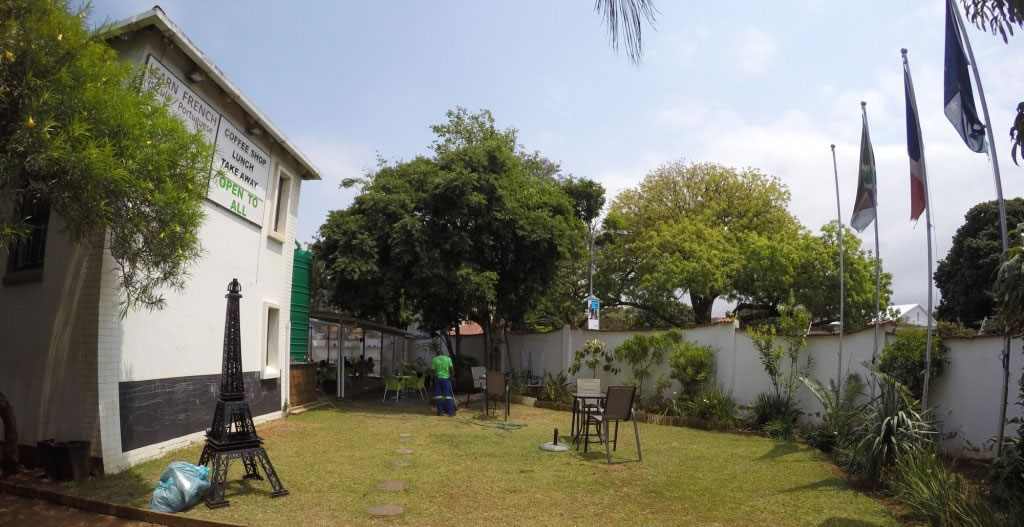
Beyond the Unthinkable? City Dwellings Without Security Walls
It started – as so much of my research has – with a hunch. For many years I have been completely overwhelmed by the high walls that South African suburbanites have created around their dwellings. They have always struck me as confronting, offensive and aesthetically unappealing. But, more than this, I couldn’t shake the feeling […]

It started – as so much of my research has – with a hunch. For many years I have been completely overwhelmed by the high walls that South African suburbanites have created around their dwellings. They have always struck me as confronting, offensive and aesthetically unappealing.

But, more than this, I couldn’t shake the feeling that these walls, which were supposedly created to make people safer, were actually having the opposite effect. As a criminologist by training, I’ve worked with police officers and security guards over many years.
So I reached out to a member of the Durban Metropolitan Police, Chris Overall. That was the start of a journey that has taken us through very different suburbs and very different ways of thinking about security – and that will, later this year, see the Durban chapter of a global organisation, Alliance Française, literally break down its walls.
Two suburbs, walls apart
In the late apartheid period South African suburbs began to change dramatically in both their appearance and design. This was the result of rising levels of crime that are typical of countries in transition, particularly those characterised by high levels of inequality as is the case in South Africa.
South Africa is renowned for having a very high rate of violent crime. By way of illustration, by the mid-1990s, South Africa’s murder rate was six times higher than that of America and 20 times higher than that of Britain. Since 1995, South Africa has ranked in the top six countries for violent crime.
As a response to the surge of crime, particularly violent crime, urban (particularly suburban) dwellers began to fortress their houses. Increasingly, housing was designed with the aim of keeping intruders out. This included constructing increasingly high walls, and erecting electrified fences and laser beams.
A new mentality emerged that focused on the fortification of home and office space. Initially this was strongly supported and bolstered by the private security industry, which had vested interests in the rush to monitor space and strengthen security. Rising crime rates effectively prompted South Africans to create alternative and substitute policing institutions.
In light of this fortification, we decided to interrogate whether this response has had the intended result: has it reduced crime victimisation? We decided to make use of a comparative approach in trying to make sense of this.
Our first step was to compare crime rates – particularly for violent crime (such as armed robbery and hijacking) – in two Durban suburbs. This is the second most populous city in South Africa and is the capital of the KwaZulu-Natal province. One of the suburbs we studied, Umbilo, is not characterised by high walls.
It’s a lower middle-class area that’s often referred to disparagingly as “Scumbilo” because of its class make-up and slightly grimy appearance. The other suburb, Westville, is strikingly walled. It’s viewed as a more desirable place to live – a place of aspiration, if you will, even though it is by far not Durban’s most affluent suburb.
These suburbs were selected following conversations with members of both public and private policing agencies in Durban. The South African Police Services, the city’s Metro Police and private companies Blue Security and ADT all became partners on this project. They, too, were keen to explore the function and impact of walls in regard to crime targeting.
Chris and I spent a few months in 2014 studying incident reports from the two areas. As part of our exploratory research we also joined police and private security firms on their day and night patrols in both areas.
On those journeys, we witnessed incidents first hand – and saw, without a doubt, that violent crime was far more common behind high walls in Westville than it was in Umbilo. These observations were reinforced by reading through incident reports and talking to the police while they were on patrol, as well as in their offices.
Walls are ‘policing nightmares’
Through their experience and their expert knowledge the police had come to view walls as “policing nightmares”. Solid, high walls are viewed as an obstacle to policing. Organised criminals always look for ways to be hidden from sight. Walls are perfect for this purpose.
Walls prevent patrolling officers from knowing what is happening inside a property. This detracts from the value of patrols as a form of crime prevention and rapid response. Walls can also become a defence for criminals: they’re given the freedom to conduct their activities without being seen from the street.
In addition, private security guards told us, the existence of a wall makes those in a home or yard feel trapped once an intruder has accessed their property. Homeowners are then slower to alert either the relevant private security company or the police.
Walls are also a problem because they prevent those who live “inside” from seeing what is happening on the outside. High walls mean that reaction officers can’t easily get onto a property – they can often only do a perimeter check, which is very frustrating for these officers and guards who are trying to protect people.
Lastly, walls and other forms of solid boundaries create real problems for patrol officers. Jumping a high wall is physically dangerous in itself. There’s also the very real possibility that patrol officers will be caught unawares by home intruders who are already inside targeted properties.
Beyond walls?
That initial hunch has brought us a long way. Our research has received a huge amount of public attention and sparked debates in a country where high walls are ubiquitous.
These debates have centred not only on physical walls but on the interconnected metaphysical walls that suburban dwellers have created.
Talk shows on this project were hosted by a number of radio stations including Cape Talk and Lotus FM. What emerged in the talk show discussions was that people feel compelled to live behind high walls as these are the only “defensive” structures they are aware of.
They are also afraid that, should they be the one house on the street without a wall, they will immediately be targeted by criminals. However, almost unanimously, callers were nostalgic for times when they lived without walls and were envious of places where walls do not exist.
A real dystopia exists in the minds of those who build walls and yet are very uncomfortable with them, both symbolically and physically. During public forums and radio shows a number of people claimed that they were going to “experiment” with taking down their walls.
Whether or not this takes place is an individual choice, but there is certainly evidence that walls are not necessarily generating the safety that is desired.
Perhaps the most exciting and real life outcome is that one of Durban’s most visible and active cultural centres, the Alliance Française de Durban, has decided to literally break down its existing high boundary wall.
It will be replaced with a boundary that generates security and engagement, and builds neighbourliness.
We don’t yet know what this boundary will look like. The KwaZulu-Natal Institute of Architecture published an expression of interest advert for the Alliance Without Walls project on May 28 2016. The final new boundary structure will be designed and constructed by December 2016.
This is one important step on the road to imagining cities without walls.
***![]()
Monique Marks, Head of Urban Futures Centre, Durban University of Technology
This article was originally published on The Conversation. Read the original article.